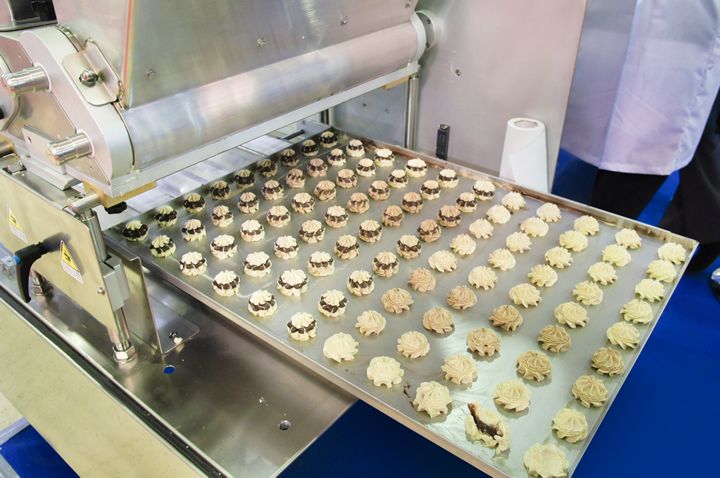Several decades ago, food safety management programs were generally reserved for the very largest food manufacturers. Many recognized just how far news of a recall can spread and how extensive the brand damage could be.
 Writing it Right: How to Draft a Compliant Food Safety Plan
Writing it Right: How to Draft a Compliant Food Safety Plan

Article from | Fortress Technology
The World Health Organization (WHO) has released its new Global Strategy for Food Safety 2022-2030. Its underlying theme draws attention to a commendable vision: To try and ensure that all people, wherever they are in the world, can consume safe and healthy food. They repeatedly refer to this effort as being a “basic human right.”
Following this, the topic for the WHO World Food Safety Day 2024 was recently announced – Food safety: prepare for the unexpected. Fortress Technology explores just how prepared processors need to be, and the role that modern inspection systems, technology and software features play in protecting consumers worldwide.
Several decades ago, food safety management programs were generally reserved for the very largest food manufacturers. Many recognized just how far news of a recall can spread and how extensive the brand damage could be. Today, retailers, legislation and prolific consumer awareness drive the food safety agenda.
HACCP SAFETY TAKES OFF
The earliest conception of a food safety management system came about in 1960s America. A team of food scientists, Pillsbury engineers and the US Army collaborated with NASA to build quality checks and ensure the food on space expeditions was safe and pathogen-free. During the 1980s, WHO published their first report on HACCP systems, recommending their implementation in food manufacturing. This food safety mindset slowly began to infiltrate food production plants, and by 2006, HACCP became a legal requirement.
During this time, some of the largest superstores began to exert their influence, starting a snowball effect that saw the profile of contaminant detection increase significantly. With retailers now insisting on frequent food safety audits, manufacturers are required to demonstrate their constant adherence to food safety principles.
Today, consumers expect contaminant-free food. Over the years, work has been diligently going on to document, plan and ensure food safety is not compromised. “Consistently high standards of food safety must be kept throughout the entire food supply chain. The industry is not relying on simple quality checks anymore. Pre-emptive, preventative measure controls, corrective actioning, accurate and regularly updated documentation and inspection systems all play their part in this new era of food safety,” states Eric Garr, Regional Sales Manager at Fortress Technology Inc.
THE WHO’S WHO OF FOOD SAFETY
Although many retailers, auditing and inspection standards refer to Hazard Analysis and Critical Control Points (HACCP) planning, the USDA and FDA only mandate these in meat, seafood and juice production. Hazard Analysis and Risk-Based Preventative Controls (HARPC) planning was introduced in 2015 to meet part of the Food Safety Modernization Act (FSMA) and Preventative Controls for Human Food rule. Generally, all food facilities in the US, by law, have to adhere to the Preventive Controls rule. This means that they need to have a HARPC plan.
So where does this leave HACCP plans? Do they connect? Is HARPC more robust than HACCP? What does the law recognize? And where does the WHO Global Food Safety Strategy 2022-2030 fit in?
HARPC planning presents a comprehensive food safety management system. It also aligns with the WHO’s food safety goals, placing greater emphasis on science-backed, risk-based preventative controls, and promotes the idea of food safety being a shared responsibility throughout the entire supply chain. Its main aim is to significantly reduce, prevent or eliminate identified hazards that are either previously acknowledged or reasonably foreseeable.
Similarly, the WHO Strategy outlines five key, interconnected, scientific-backed priorities: Stronger national food safety control systems; the utilization of food safety systems to identify and respond to food safety challenges; increasing use of scientific evidence and risk assessments in decision making; stakeholder engagement in risk communication; and promoting food safety as an essential component of trade.
Uncovering the crossovers, and picking apart the distinctions, Fortress Technology’s free and informative new whitepaper “Writing a Food Safety Plan” details the step-by-step process to designing and implementing an FDA-approved plan.
RATE YOUR RISKS
Traceability is a key element in WHO’s global food safety initiative. Inspection systems such as metal detection and X-ray mitigate the risk of physical contaminants, while simultaneously increasing traceability and reducing the likelihood of a recall.
HACCP planning focuses on Critical Control Points (CCPs), of which, inspection systems play a large and very essential role. However, in HARPC planning, risk prevention in North America now extends beyond CCPs with food manufacturers required to rate the risk of their identified and reasonably foreseeable hazards by severity and likelihood. From this, control measures should be implemented to prevent, eliminate or reduce the hazards to an acceptable level. This can include the addition of an inspection system.
To illustrate this point, most food production lines use metal in their equipment, tools and processes. This presents a high probability of metal contaminants entering the production line. An end-of-line metal detector can be used as a preventative control measure in this instance.
TRACEABLE DOCUMENTATION
A well-established documentation system forms an integral part of food safety. Documents must be maintained and stored safely in order to comply with the Preventative Controls Rule.
The FDA and FSMA requires all food manufacturers keep a written record of their entire HARPC plan, including the process, proof and problems. Preventative control monitoring records, corrective actions, inspection system performance validation tests, auditing and inspection results, the recall plan, supply-chain program and certificates relating to food safety must be documented and up-to-date.
Highlighting the benefits of storing data digitally, Fortress inspection machines can be equipped with real-time reporting software to optimize food quality controls. “Digitalizing record-keeping eliminates many of the cumbersome functionality concerns food manufacturers usually encounter with paper records. Notably infrastructure, data storage, security and scalability. Processes that have largely been paper-based can utilize digital record-keeping as a fundamental step toward building a sturdier supply chain and reporting process,” emphasizes Eric.
DEFINING THE FUTURE
Just as history has shaped and enshrined today’s food safety rules, the unprecedented combination of processing pressures, trends and supply chains has the potential to enhance or disrupt the safety of our foods. Processing and planning systems need to keep pace.
Changes to food safety concepts, including the WHO Food Safety plans, are largely driven by US legislation. Most countries’ legislative frameworks are now merging into things that look very similar to these FDA and FSMA standards, creating a roadmap that modernizes farm-to-fork food safety systems, pursues continuous improvements and bolsters collaboration.
HACCP has evolved. So too have manufacturing processes, the supply chain, inspection systems and documentation requirements. Eric concludes: “By continuing to work closely together, food manufacturers, machinery suppliers, production staff, retailers and consumers can shape how modern businesses cater to food safety demands. Future food safety improvements are largely dependent on this level of cross-collaboration.”
Click here to download your free copy of Writing a Food Safety Plan.
The content & opinions in this article are the author’s and do not necessarily represent the views of ManufacturingTomorrow
Comments (0)
This post does not have any comments. Be the first to leave a comment below.
Featured Product

